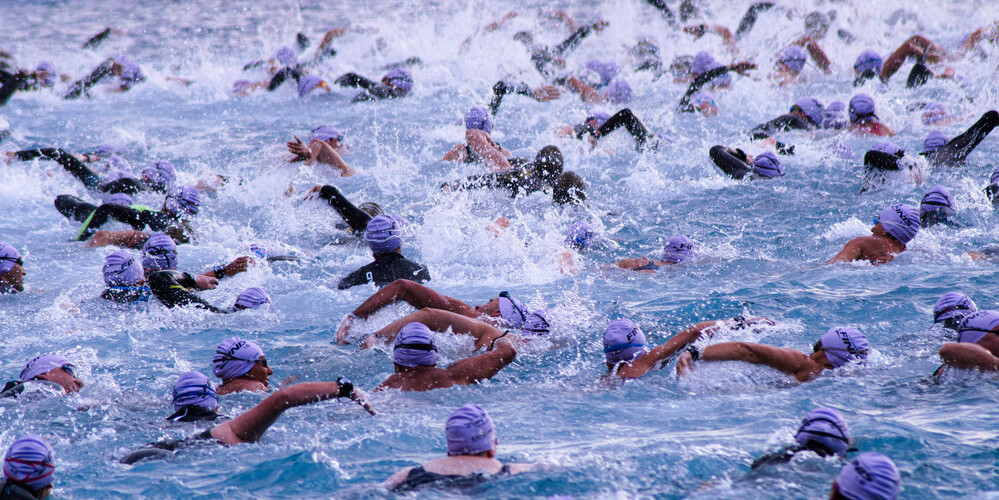When hundreds or even thousands of neoprene figures plunge into the water at the same time at the start of a triathlon, a lack of space and breath is guaranteed. Here are the best tips.
Text by FITforLIFE – this blog post was provided by the Swiss magazine FIT for LIFE. If you wish to regularly read informative knowledge articles in the field of endurance sports, then click here.

When you hear the starting signal and the excited crowd starts to move in the water, people push, pull and kick – and the fear that an elbow or an energetic foot kick will hit your head or rib is always there.
Adapt your training
For most athletes, the real crux of the mass start is not just the scuffles at the start, but also the speed, which is hard to escape (especially if you have positioned yourself far forward). The good thing about it is that you are surprisingly fast at the start. The bad thing: you inevitably swim into an oxygen debt, your pulse explodes, your muscles overacidify and your lungs scream for air before the first buoy is even within reach.
You can prepare for this situation. If you don’t want to “get stuck” in the first two to five hundred metres of a mass start, you have to prepare yourself for this “start explosion” with various exercises in training. “Uncomfortable” sprint series in the run-up to the competition promote the ability to incur an oxygen debt at short notice.
Careful race preparation
To ensure that everything stays in place in the scramble, it is best to hide the neoprene strap under the Velcro fastener, wear your swimming goggles under your swimming cap and take care of the timing chip on your ankle under the neoprene finish.
The further forward you are, the more frenetic the swim start will be, unless you are an excellent swimmer and can sprint away right at the start. Fortunately, not all areas of the starting line are so nervous. Therefore, you should think carefully about where you want to position yourself.
Assess your ability correctly! Inexperienced swimmers or those who deliberately want to take it easy should get in line at the back and let the big crowd go first. Ambitious mid-field swimmers without a desire to fight are recommended to take the marginal places in the mid-field, where you can swerve to the side in case of bottlenecks. And only those who either swim very fast, are strongly built or like to fight should place themselves at the very front in the middle.
Practice emergency scenarios
If you do fall victim to a jostle, it’s an advantage to have practiced in training the following scenarios for unpleasant situations:
- Goggles off: learn to put on swimming goggles in open water without touching the bottom by kicking your legs upright on the spot (treading water) or lying on your back a bit off to the side if possible.
- Neoprene open: Learn to close the open zip of the neoprene without help by standing vertically in the water like a pencil and thus grasping the strap lying on the surface of the water and pulling it up.
- Lost bathing cap: Tie your hair in advance so that you could swim without a bathing cap.
- Pressed under water: Keep calm and hold your breath until the jostling is over. Either continue to swim with your head above the water or swim a few metres breaststroke. In the worst case, lie on your back and breathe calmly.
- Injured, nauseous: Before the start, find out where you would go in case of injury or nausea (buoy, diving tower, lifeguard?). In an emergency, lie on your back and breathe deeply and relax.
- Emergency situation: If help is needed in the water, hit the water with the flat of your hand to attract the attention of the rescue services. Everyone understands this sign.
